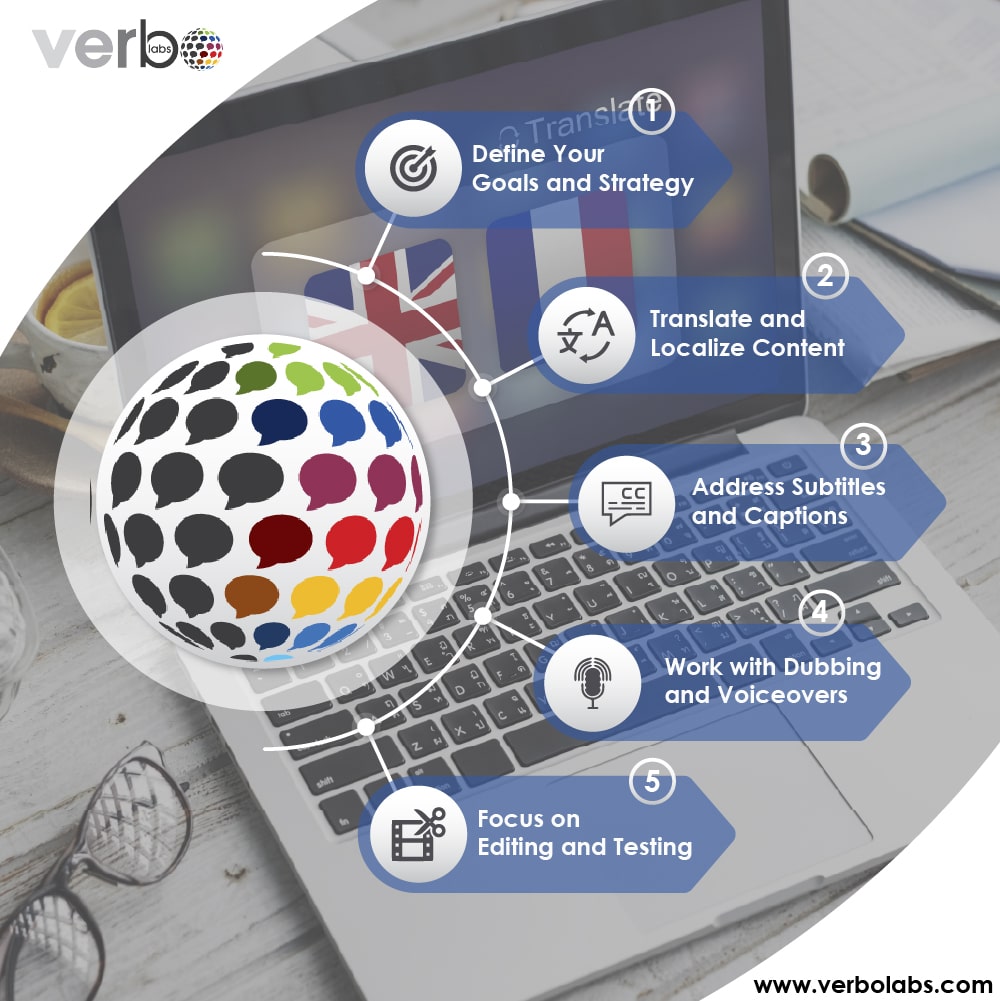With the world going global, and more content going digital everyday whether it is audio or video, there is a surge in demand for the field of video localization globally. Language industries should roast this opportunity to localize their video content to expand their area of reach, get new sales and customers and get recognized internationally.
Here are 5 key steps which can open new dimensions of video localization for you.
- Plan your strategy and set your goal:
The first step in video localization should be to plan your strategy and set a goal and keep striving to achieve that goal. While localizing your video you should focus on:
Pick your audience: the first and foremost part of your localization strategy is your audience. You should know your audience, what is their taste, in which language they are comfortable and what all they do like to see in a video. All these things will decide the outline of your videos.
Purpose of video localization: purposes of video localization can vary to an extent. Either they can be a promotion of your brand or any other brand. Or just simply a music video or a movie, accordingly localization will take place.
Pick the details which need to be localized in the video: before localizing your video you should pick up all the intricacies of the video finely which needs to be localized. This will add up to the perfection of your video localization skills.
- Going with the best team of translation and localization:
Skills of your team, their management and their perfection will speak for your perfection. You should include a project manager, translators, and audio-video specialists. You should also take reference from a video localization agency that has already proven itself in the video localization field.
You should translate all the written text, including all the spoken dialogue in the video, including all the words which appear on screen. To get the best result you should collaborate with the native speakers.
After localizing words you should focus on localizing images, graphics, colors and animations that are fit for your new audience and market.
While making the videos it is also important to keep in mind the culture and heritage of that particular audience. Do not forget to add some cultural elements as this connects to more people and fastly.
- Subtitling and captioning:
Another option to convey the message in the video conveniently is subtitling. Working on subtitles is one way to ensure that viewers can understand the video regardless of the target language.
Subtitles: these are the lines of translated dialogues that appear on the screen while the videos play. It is the most effective way of localization because the subtitles can be added right after the translation. Along with being cost effective they are easy to edit also. It saves so many additional steps such as voice track, re-recording content.
Captions: the caption of the video not only gives the details of the video but also gives the experience of the videos while volume is turned off. These were initially created for the hearing impaired persons, so they could understand the dialogue as well as some other elements of sound in the videos. But now captioning is enhancing the experience of the videos.
- Dubbing and voice overs:
These are also the techniques for relaying information in the video to the audience. Dubbing requires dubbing artists who follow the original voice over track, emotion and tone of the video. Voiceovers are narrations that complement the video.
Dubbing: this process involves the whole procedure of recording audio content, then replacing it with original audio material. Dubbing is a complex technique through which we can actually relay the emotion of the video as the dubbing artists not only translate but also mimic the emotion and tone.
Voiceovers: it is the process of adding a voice audio track that is different from a dialogue. Dubbing is useful in the videos with less of conversation and more of images, graphics. And if the video already has voiceover in its original language then it is not a big deal to exchange one language into another.
- Polishing video with editing and testing:
Quality check is the most important aspect of video localization. It will not only give the audience the perfect experience but also enhance your brand value. Quality check requires two steps : editing and testing.
This editing and testing has following steps:
Review the video: we should check the whole video. Rectify all the errors. Add any specification or detailing which is left. We should get it tested through native speakers and ensure that language, tone and emotion of the video is related with good quality to the customers.
Finalizing search engine optimization(SEO): to make video accessible to our audience we should ensure that video can easily be discovered by the audience by making sure that all the keywords, subtitles, descriptions and transcripts are strategically placed.
Summary:
With digitalization and the digital content being conveyed from one place to another, it is really crucial to deliver the best quality of video localization to the audience. This gives the opportunities to different global platforms to reach internationally and attract a tremendous number of audience. By following all these steps you can master the field of video localization.



